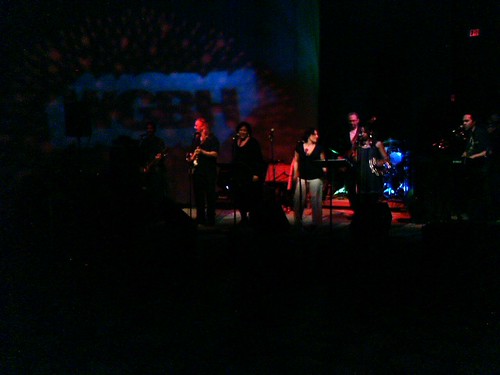Public Media 2007
Last week I spoke at The Integrated Media Association's Public Media 2007 Conference in Boston. The audience and most of the speakers came from the public radio and television community that is trying to deal with the disruptive force of new media. I really enjoyed the opportunity to listen to new perspectives in content management.
Resource constrained, this industry has fallen behind in digital innovation and there was a great sense of urgency to adapt - or perish. The different stations and shows were looking to work together, embrace risk, and pick up the pace. Innovator in Video Journalism Mike Rosenblum gave a great talk about technology disruptions. Using several examples, he made the point that "technology happens," someone figures out what to do with it, then market revolution happens. Tom Mohr talked about the traditional print publishing industry's struggle to stay relevant and brought on some guests from the BBC and CBC to talk about their transformations.
My session on selecting a CMS, was a lot more grounded and tactical. We talked about current state and small steps to help get parity as cheaply as possible. Many of public radio stations and shows are starting with something as simple as a static HTML site and a blog. Some were growing out of this platform and moving to Drupal and various Nuke applicaitons
In general, open source is very attractive for the price but many organizations have small to non-existent technical groups. This makes operating and installing any software (commercial and open source) a challenge. One attendee that I spoke with made the point that public media needs a new generation of engineers that is as passionate about software as preceding generations was about audio/video engineering. Public Interactive's SaaS product has a huge marketshare as does Expression Engine which is free for non-profits and non-commercial use. However, I expect that these turnkey solutions could hold an organization back if it really wanted to turn the corner and become innovators. You can't innovate without some level of investment and risk.
There was a lot of talk about collaboration between public media organizations. This would share the cost of innovation so that the sector would innovate together without differentiation. There is an initiative to share Google Analytics data. There may be opportunities to standardize on data formats and even standardize on using the same technology. On the open source side, my co-panelist Brendan Greeley talked about the high degree of overlap between the open source community and the public media audience., He should know, he runs the web site of the popular radio show "Open Source." He posts technical questions on the show's blog and listeners write back with answers. Drupal has a module called "Station" that provides tools for a radio station such as a schedule and a playlist. Plone has a number of add-on products to address issues like high bandwidth streaming and large file handling. Joomla! has Joomla Radio. I am sure there are others.
I guess the big question is whether the public media companies have anything to offer this growing social media phenomenon. Is YouTube the new definition of "listener supported" programming? Public Radio and Television have the advantage of trusted names and loyal audiences. They just need to figure out a way to leverage these assets without allowing them to become encumbrances in a fluid and agile media world.
